Pawns and Patience
Cason t -
Hello everyone! I hope you all had a nice Easter!
Like the week prior, I spent the week working on both the board and the pieces. At the start of the week, I focused on tackling some of the pawns since I still had about 15 more to make. This process was probably the most annoying part of the entire project. For starters, the temperature earlier in the week was much higher than it had been, and with the dry climate, the clay kept drying out. For example, I’d take a ball of clay from a new package, and by the time I rolled it out or flattened it, it would already be too dry and would break. I tried adding more water and working faster, but it was pointless—the clay dried just as fast as before. After wasting so much time on this, I was getting pretty frustrated and had to find somewhere to work indoors that wouldn’t be too messy. This led me to the bathroom countertop.
Working indoors solved the problem of the clay drying too fast, but I ended up making a new mistake: I tried to make too many pieces in one sitting. To standardize the pieces and have them look somewhat similar, I took each piece from the base up. I rolled out the bases for about nine pawns, thinking I was making progress, but it ended up being a decision I would regret. I managed to get everything to a similar size and slipped the bases together, which turned out to be the most time-consuming part so far. Then I moved on to making the nine bodies. By this point, I was getting impatient and ready to be done for the day, but I kept pushing through so I could finish. After rolling out the bodies, I attached them to the bases. At this point, I had been sitting on a small stool for hours, and my back was feeling it, but I figured since I had already come so far, I might as well see it through.
That’s when the real fun began: finishing the tops. As you might’ve noticed, I’ve been describing this like I didn’t have much choice—and that’s because I didn’t. The clay dried fast, even indoors, so I could barely step away for a break without it hardening. What I thought would take a few hours turned into an all-day affair with little room for breaks unless I wanted to start over. By the late hours of the night, I finally finished the nine pawns and was free—for the day, at least. Overall, I finished 12 pawns this week, bringing my total to 13. At least now I know my patience limits with clay, and I’ll definitely pace myself better in the future.
After taking a massive step away from clay, I shifted to working on the board and gluing it together to make the checkerboard. Testing the glue showed it dried pretty fast, so to make things easier, I glued the board into rows first and planned to glue everything together later. One issue I ran into was that the blocks had slight imperfections in their shape. When everything was glued together, it didn’t fit perfectly—some blocks were crooked, and others curved. For one of the rows, I had to split it apart by hammering a razor blade between two blocks and replacing the problem piece. Generally, this wasn’t too big of an issue, as a bit of extra sanding smoothed it all out. When gluing all the rows together, I used clamps to hold everything in place and minimize gaps. In the end, the checkerboard is now square, but with all the sanding, the frame ended up being a bit too large. To fix this, I’ll need to cut the pins of the dovetails a bit deeper to adjust the frame.
Here is what some of that gluing process looked like:
Glue was kept away from the tops and bottoms to prevent glue spilling out when the blocks were pushed together.
This week has been a real test of patience and problem-solving, but I’ve definitely learned a lot. From battling drying clay to fixing imperfect blocks, I now have a better idea of my limits and how to work smarter moving forward. Stay tuned as I keep making progress on this project!
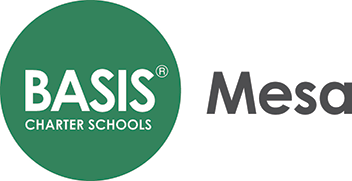

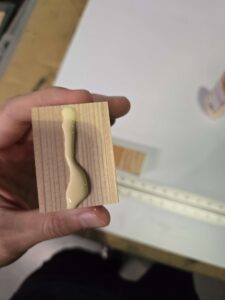
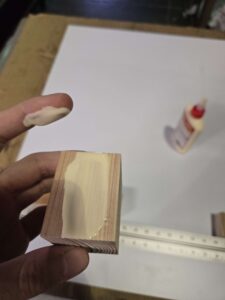
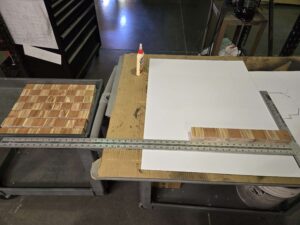

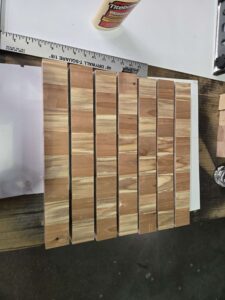


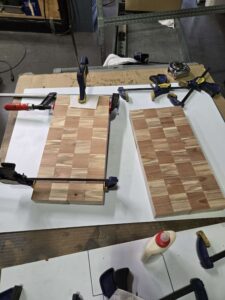
Comments:
All viewpoints are welcome but profane, threatening, disrespectful, or harassing comments will not be tolerated and are subject to moderation up to, and including, full deletion.